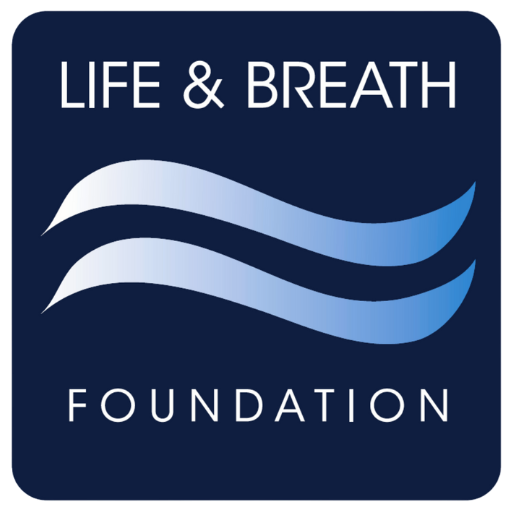
Sarcoidosis FAQ
Sarcoidosis Details
-
What is Sarcoidosis? - Sarcoidosis Tips with Dr. Elisabeth Carr
Sarcoidosis is a complex inflammatory disease that causes tiny, grain-like clusters of inflamed cells – called granulomas – to form in various organs throughout the body. Over time, these clusters can grow into masses that alter or compromise organ function.
One in every 2,000 Americans has sarcoidosis.
While sarcoidosis more commonly targets lungs and lymph nodes, this chronic disease can affect various organs including the brain, eyes, kidneys, liver, nervous system and skin, among others.
Sarcoidosis affects people of any age, race, gender and ethnicity. However, it is more common among adults 20 to 40 years old. In the United States, the disease affects African Americans more often and more severely than Caucasians, according to the National Institutes of Health’s National Heart, Lung and Blood Institute. The disease is also more common in people of European — particularly Scandinavian — descent.
There is no known cause for sarcoidosis.
The course of sarcoidosis varies greatly among people. It can be mild, and the symptoms may go away within a few years, even without treatment. But sometimes sarcoidosis slowly gets worse over the years and can cause permanent organ damage. The severity of the disease can vary by race and ethnicity.
Many patients will not have long-term affects from sarcoidosis, while 5-10% of all patients will suffer from advanced sarcoidosis. Although there is no cure, there are many ways to treat this disease.
-
Since the disease was first described in the late 1800s, there has been an ongoing debate about pathogenesis, diagnosis modalities, and ultimately treatment options, with still no firm consensus among leading experts in their fields. Current literature attributes the development of sarcoidosis to environmental exposure in genetically predisposed individuals. The ACCESS (A Case-Control Etiologic Sarcoidosis Study) found some occupations and certain exposures, including birds, organic dust, and molds, were more frequently associated with developing sarcoidosis. However, it did not come to a definitive conclusion on a possible cause. Exposure to these triggers is widely believed to activate the immune system in genetically susceptible patients and lead to the formation of non-necrotizing granulomas.
-
-
Does Sarcoid Ever Go Away? with Dr. Raj Dasgupta: Sarcoid Tips
There's no cure for sarcoidosis, but in many cases, it goes away on its own. You may not even need treatment if you have no symptoms or only mild symptoms of the condition. The severity and extent of your condition will determine whether and what type of treatment is needed. mayoclinic.org
-
-
Remission in Sarcoidosis with Dr. Carr
Active Sarcoidosis vs Sarcoidosis in Remission
Many people with sarcoidosis never have symptoms. Others may have organ-specific symptoms, such as lung-associated shortness of breath, wheezing, and dry cough; eye-associated burning, itching, redness, and rarely blindness; skin-associated painful or tender bumps or ulcers; heart-associated leg swelling; and some may have pain in bones or joints. When these system-specific symptoms occur, prompt evaluation by a physician to rule out other possible causes is necessary. If these symptoms are decided to be sarcoid in origin, then the patient is thought to be in a sarcoidosis flare, at which time immune system suppressing medication may be beneficial. Should the symptoms resolve, the medication be slowly stopped, and the symptoms not recur, then that is called remission.
A recurrence after 1 or more years of remission is uncommon (affect- ing <5% of patients), but the recurrent disease may develop at any age and in any organ.
-
-
Less than 5% of patients die from sarcoidosis; death is usually the result of pulmonary fibrosis with respiratory failure or of cardiac or neurologic involvement. (NEJM)
Living with Sarcoidosis
-
Unfortunately, up to a third of patients have the unrelenting disease, leading to clinically significant organ impairment.
Less than 5% of patients die from sarcoidosis; death is usually the result of pulmonary fibrosis with respiratory failure or of cardiac or neurologic involvement.
Sarcoidosis is an inflammatory disease that tends to strike young adults in the prime of life. It commonly affects the lungs but can attack other organs in the body.
While many people's symptoms remain mild and never need treatment, experts can't yet predict whose disease will get worse. Plus, symptoms of sarcoidosis are similar to those of many other diseases, so people don't know they have it until the disease has advanced.
Expert care is critical for patients with sarcoidosis. Prompt evaluation and treatment by a multispecialty team can lessen the likelihood the disease will cause permanent damage
-
-
Two of the most common symptoms of sarcoidosis are pain and fatigue, which make it difficult to maintain an active lifestyle. Working out can feel impossible on bad days. However, keep in mind that light, easy exercises improve your health and will enhance your overall quality of life. Sarcoidosis patients have found that walking, yoga, swimming, and other low-impact exercises have greatly improved their health. Take exercise tips from other sarcoidosis patients, since they also know what it's like to battle chronic pain and fatigue.
Helpful Links
Reduced muscle strength, exercise intolerance, and disabling symptoms in sarcoidosis
-
-
-
-
-
Approximately 1 in 10 cases of sarcoidosis involve the skin. The presentation of the rash can vary from one person to the next. In some cases, the sarcoidosis patient may benefit from local therapies, such as corticosteroid-containing skin creams. In other cases, sarcoidosis is found to be active in other areas, such as the lungs. In such cases, it is often best to treat with medications that are effective for all of the affected areas. The decision to treat with local treatments or more generalized treatments should be discussed with your doctors. With respect to your question about sun exposure, there are some reported (published) cases of sarcoidosis of the skin worsening after sun exposure, and sun exposure is thought to contribute to the production of excess vitamin D which can lead to elevated calcium levels in the blood. Elevated calcium levels can result in severe dehydration, confusion, kidney stones, and changes in kidney function. Thus, it is wise for sarcoidosis patients to avoid prolonged or excessive exposure to the sun, especially if they have a history of elevated blood or urine calcium levels. On the other hand, it is unlikely that limited sun exposure will cause any harm.
-
Sarcoid itself is not immunosuppressive but the medications used to treat active sarcoid are immunosuppressants.
-
Yes, the medications used to treat active sarcoid are immunosuppressants. While you are on these medications you should be protective of your health.
Sarcoidosis Medication
-
-
When to use Which Medications, Steroid Sparing- with Dr. Adam Morgenthau
Drug treatment is very common to relieve symptoms and reduce inflammation of the organs affected by Sarcoidosis. Prednisone and other steroids commonly treat inflammation and address fatigue and persistent coughing. When used at high doses, prednisone can cause side effects from weight gain, high blood pressure, depression, difficulty sleeping, heartburn, acne to cataracts, glaucoma, adrenal gland insufficiency and aseptic or avascular necrosis, the development of cysts and hardened and dead tissue in the hip. Your doctor can usually help you manage these side effects. Other drugs are sometimes used to treat Sarcoidosis. Most of these other drugs are immune system suppressants. This means that they prevent your immune system from fighting things like bacteria and viruses. As a result, you may have a greater chance of getting infections. Other drugs used to treat sarcoidosis include:
Hydroxychloroquine (Plaquenil). This drug can usually help people who have Sarcoidosis in the skin or a high level of calcium in their blood. This drug can irritate your stomach. It also can cause eye problems. Before starting on this drug, you should see an ophthalmologist or eye doctor, for some baseline tests. Once you start taking it, you should have your eyes examined every 6 months.
Methotrexate. This drug is taken once a week by mouth or injection and usually takes up to 6 months to relieve symptoms. This drug may cause side effects, especially if you take high doses. These include nausea, mouth sores, a decrease in infection-fighting white blood cells. You then have a greater chance of getting an infection. If you take this drug, you should have regular blood tests to check the levels of your white blood cells. This drug can also cause liver damage. Taking folic acid can help you reduce your chances of having bad side effects from methotrexate.
Azathioprine (Imuran). This drug may work in about half of the people who have sarcoidosis. You usually take it for at least 6 months. Side effects include: nausea, reduced white blood cell levels, which increases your chances of getting an infection. This drug has caused cancer in some people, especially when they have taken it at high doses.
Cyclophosphamide (Cytoxan). This is a very toxic drug. It is rarely used to treat Sarcoidosis. It is given only to people who have serious forms of sarcoidosis, such as Sarcoidosis in their central nervous system (Neurosarcoidosis). This drug is more likely to cause nausea and reduce your white blood cell levels than either methotrexate or azathioprine. Your doctor should check your white blood cell levels often while you are taking this drug to make sure you have a high enough level to fight infection. Cyclophosphamide can also irritate your bladder. Some people who have taken it for more than 2 years have developed bladder cancer. Cyclophosphamide can be given intravenously (through one of your veins), which lessens some of its side effects, but this doesn't reduce the risk of cancer.
Most of these drugs also can cause serious side effects. Some also could increase your chances of getting cancer, especially if you take them at high doses. Some drugs used to treat Sarcoidosis are taken by mouth. Others are applied locally to an affected area. Local therapy is the safest way to treat sarcoidosis. The drug is applied directly to the affected area. As a result, only small amounts of the drug reach other parts of your body. Drugs used for local therapy include eye drops, inhaled drugs for your lungs and skin creams. It’s important to note that untreated sarcoidosis can result in permanent complications such as breathing difficulties, blindness, kidney failure and heart problems that can result in death.
-
-
Sarcoid itself is not immunosuppressive but the medications used to treat active sarcoid are immunosuppressants.
-
Yes, most of the time you can. However, depending on immunosuppressive therapy, you may need to get your shots prior to initiation of certain medications. Talk to your doctor about the specifics.
Sarcoidosis and Mental Health
-
-
-
-
1-855-STRNGER (1-855-787-6437)
